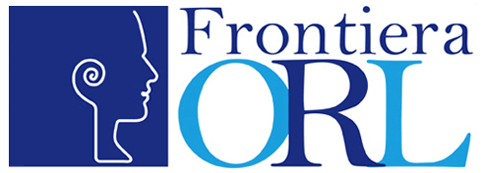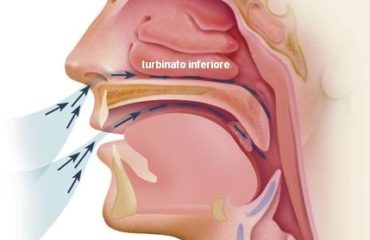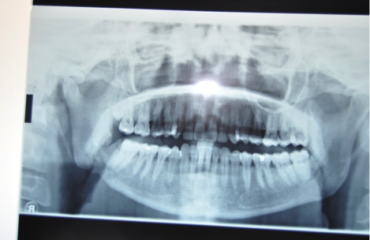
M. Galasso
Abstract
It has long been discussed on how the temporomandibular joint later (A.T.M.), maycause postural problems, actually the huge amount of system receptors stomatognatic (system that includes all the anatomical structures of the mouth, where etymologically “stoma, stomatos” = “mouth” and “gnatos” = “jaw”) and the high number of daily contractions of the muscles involved in chewing is that swallowing suggests well how important this apparatus for the life of the individual and as the ATM can be because of postural alteration; between posture and occlusion there are obvious correlations that validate even more the thesis of this bond, this is enabled by accurate reports that the system afferent stomatognathic system has with the structures that maintain the posture control, in fact, we have seen how these proprioceptive stimuli received from the trigeminal nerve passes through synapses nerve Members maintaining balance. In fact if we look at these perfectly synaptic connections we will realize that they are connected with a wonderfully the other, in fact, we see that the trigeminal nerve fibers have connections through pipelines to the cerebellum and vestibule and synapse with the hypoglossal nerve and oculomotor nuclei; in fact, it was noted that depending on the position of the mandible in relation to the skull, there has been a change of posture. Is’essential that the D.C.C.M. It will be resolved or managed more successfully and more quickly
through a multidisciplinary assessment, and then with the experience and professionalism of
doctor and dentist, the physiatrist and posturologist, the osteopath, the neurologist and the
psychologist who complement each other.
Introduction
To diagnose a disease, the body must be assessed and controlled in its entirety; the postural system is defined as a cybernetic system complex, formed by a central unit (SNC) which has a control function, and that processes the information to starting receptor; a effector system, which transmits nerve impulses to muscles, ligaments, and glands, determining the activation. By the term posture is defined as the relationship between the position of thethe body and the surrounding environment, it is also influenced by the force of gravity, and helpsmuscles to contract so that the skeleton can keep his balance. And ‘required coordination between posture and movement to allow the realization of a complex act motor. The motor command is equipped with a control component and a postural member of the component directed movement. Postural alterations, both arising from perceptual cognitive disorders, from poor postural control, by erroneous automatic assimilated unconsciously, by confusing sensory information, insufficient body experiences or disorders development musculoskeletal, lead to an alteration of the normal “arrangement” postural-motor. This arrangement is not only the result of a neuro-mechanicsosteoarticular balance, but it is also an expression of the individual’s personality and somaticits habits of behavior, affective-relational and socio environmental interactions. In the aspect neuromotor posture it is ensured by reflections in attitude and straightening, they include the harmonic coordination of motor acts postural action antigravity, and involve the entire structure through kinetic chains functionally linked.
This connection is made responsible for the onset of postural adaptive syndromes that, in ascending, descending or mixed, broadcast in other parts of the body and the initial disturbancelocalized, achieving a new balance compensation. This system of postural regulation depends on a system of integrated sensory and sensory afferents from those structures that Gagey defines “exo-captors” (view, vestibule, foot) and “endo-captors” (oculomotricità, spine, General proprioception) and which draw both the cerebral cortex dancing under bark, the cerebellum but also in the spinal cord and are integrated at various levels of S.N.C. through important roads and nerve centers such as the vestibule-spinal systems, grid-cord, cerebellum-vestibular, and other peripheral mechanisms such as muscle spindles.As regards the postural function in strictly speaking, it is believed that the vestibular, visual and proprioceptive to start from the limbs lower and feet are of greater importance than those related to the spine proprioceptive and the extrinsic muscles of the eye. The view plays an important role in the regulation of posture, and by virtue of the retinal stimulation, being the retinal periphery sensory important for the purposes of the posture, both in relation to the oculo-motility captor essential to the mechanism of stabilization of the eye compared to the vestibule. The vestibule has a decisive role spatial orientation, the right tone and the correct postural position of the eyes in response to stimulation was kinetic head. Visual afferents are an important channel information for controlling the posture in the upright. They belong to the spatial sequence and temporal synergies that underlie the “postural strategies” as a mechanism of intense voluntary programming of the automatic control of a variation of posture. The balance postural of the masticatory system is part of a more general balance of all the apparatus musculoskeletal system, consists of multiple overlapping segments but intimately related. One of the the most obvious problems encountered in the field of postural and not only are the craniocervico- dysfunction mandibular.
Skull, mandible, dentition, tongue and cervical spine actually form a functional unitinseparable and as such should be examined. In turn this unity is inextricably linked to the entireposture. It must therefore be borne in mind that any action affecting the mouth may have influences on the entire body. The relationship between occlusion and extrastomatognatico traveling in both directions passing three crossroads: cervical spine, mandible and hyoid bone which is, in turn, closely connected to the tongue. All that occurs in the mouth affects, through the joints temporo-mandibular, cervical tract thereby affecting the shoulder girdle, the column spine to the foot and vice versa. Whatever postural imbalance it will bring tensions various body districts in a circular way (from bottom to top and viceversa) involving always mouth and foot (hindfoot especially). To better understand the biomechanics correlation between posture and occlusion is important to remember that the striated muscles body can mutate their action depending of the head which is fixed to the stabilization of bone segments on which you place it.
The whole physiology of mandibular movement is based on this fundamental concept: the muscles that take insertion on the mandible move starting from two possible fixed points, the skull and hyoid bone. In the presence of proper postural alignment, we will have a stabilizing of the head on the cervical, thanks harmonica muscle function extensors (spleni, muscles along the head and neck, semispinali, straight and oblique muscles of the head or suboccipital, muscles of the back) and flexors (sterno-mastoid-cleido, scalene) of the cervical spine and hyoid bone (suprahyoid muscles and infrahyoid). In this situation, the temporal muscle, masseter and internal pterygoid contracting elevate the jaw, taking as a fixed point on the skull, while contraction of muscles suprahyoid lowers the jaw (fixed point on the complex pharynx-hyoid-spine); only in extreme opening of the mouth you have a slight extension of the head on neck. It ‘easy to see that, accordingly, in the event of incorrect posture, in which for example is present head in the front position, we will have a tone failure basic muscle between the front and rear muscles of the neck (and thus of the respective chains muscle) to which is often added to the jaw clenching habit (stress), which will affect, in particular, at the atlanto-occipital and apparatus stomatognatic. The cranio-cervical-mandibular units can only have a system proprioceptive high efficiency and sensitivity of the enormous importance for the survival and the health of the organs and structures in it. Therefore its right alignment of any plane, caused by Stomatognathic issues and/or extrastomatognatiche (primary or secondary), it will inevitably result in general mechanical and postural compensations she reflected.
Materials and methods
Underwentposturaladanalisi13patients, 7males and 6females agedbetween 21andthe47 years; during theposturalevaluationinpatients analyzedwe are examined:
Inclusionand exclusionparameter:
- Absence ofacute inflammatory conditions;
- Absence ofrecenttrauma;
- Lack oforthopedic devices(busts, plaster casts, orthotics, braces….);
- Absence ofprostheticreconstruction;
- The absence of specificdisordersof the vestibular system;
- Absence ofmedicaltreatments.
Thepostural evaluationfrom the first visit, thesubsequent testsis performedwith the following
clinicaland instrumental means:
- Medical history;
- Examinationofbasicpostural: observationon thefloor,frontal, sagittalandtransverse;
- Card VAS;
- OfBarrevertical;
- TestingBasicVestibular(Romberg, Unterberger, Fukuda);
- Muscletesting;
- Dynamictestsof the vertebrallevels;
- Romcervical(amplitude evaluation ofthe cervical spinemovement);
- TestBassani;
- TestLasègue;
- Placement Test;
- TestMeersseman;
- Examinationposturographic;
- Examinationbaropodometric;
By historyanalyzedpatients reportat least 3of the following symptoms: dizziness,headache
head, backpain, the heels, arms, humming or whistlinginside the ear, feelingto havetheir earspluggedstiff neck, jointpain ornoiseof the jaw, limitationof the mouth, eye pain andeye fatigue, tingling ornumbness in the handsand arms, toothache; bypostural assessment8of 13 patientshavea frontunbalanceof the headwith a prevalenceoflimbclosurechainsandupperchest, where the mandiblewas affected by thismyo-fascialtensionfavoringthe losslabialcompetence, thenwe arefaced with a2ndclass withdentaldeep bitewithrepercussionofthefoot supportand stability; allpatients will befollowedwith the sameprotocol, and thenwithorthodontic correctionwithremovable devices, osteopathic treatmenttargetedatrelaxationmyo-fascialprevailingareas, andglobal posturalreprogramming2timesweeklyfor six months; Thetreatment involvesthe“re-alignment of body segments”:
- craniomandibularexercises;
- posturalexercises;
- strengtheningof the seallip;
- Controlof the lingualcoordination;
- Isotonicexercises ofactive movements;
- Isometricexercises ofactive movements;
- musclelengthexercises;
- cranio-cervicalexercises;
- exercisesof theshoulder girdle;
- lengtheningof theposterior chain(Mezieresmethod).
Clinical Case1
Anna43Years
Examination carried outat the first visit.
Examination carried outafter 5months of treatment.
Examination carried outafter 9months of treatment.
Clinical Case 2
Giovanni Years 27
Examination carried outat the first visit.
Examination carried outafter 5months of treatment.
Examination carried outafter 9months of treatment.
At the end oftreatment(9 months), 9patientsdid notcomplainany moreof the disordersmentionedabove andit obtained acorrection ofcranio-cervicalpostureand aCreepmandiblewithmaintaining thecoldcompetence; while the remaining4hadonlyimprovement of flexibility, balance, agility, and above allan improvement in thepainful symptoms.
Conclusions
In recentyearsthe relationship betweenthe stomatognathicsystemandposturalcontrolhas taken areliefin the contextofgrowingto dentistryproblems. The actualityof the topicdoes notit proposesonly in thegrowing number ofrequests forodontostomatologicaltreatments aimed atsolveposturalorderproblems, but alsootovestibolare, neurologicalandorthopedic. Is’it has been demonstratedthe inseparabilitybetweenanatomical and functionalhead position anddisordersocclusion andrepercussionson the apparatusof the masticatorymuscles andjointtemporomandibular joint, and the resultingcorrelation betweendental occlusionandposturalattitudeindividual. There are still manystudies to be madeto understand all thecorrelationsbetweenfunctionsand adaptationsthat the human bodycarriesin each situation, andthe starting pointis thecollaboration betweendifferent professionals, eachwith their own skillsandabilityinthanthe whole organism. Posturalmistakes, even modest, over timethey canfirstand thento causeinconveniencediseases: overloadsresultingjoint degeneration(Arthrosis, meniscusetc.), Stiffnessanddegeneration ofelastictissue(tendon, myopathies,etc…). Entrapmentof nerves, respiratoryblocks, digestive disorders, poor circulation, balance problems, mental illnessetc. From modernphylogenetic studiesit shows thatthe manis illit fitson the ground floor. Given the enormous complexity, our organism functionsas a systemcybersex, or a system capableof self-regulation, selfadaptingand programmingcar. He,according toinformation receivedinstantby instantfrom the outsideand inside,looking
constantlyto best pursuethegoalof homeostasis; moreenvironmentalinformationour bodyreceivesare many and varied, longer able topursue afine adjustmentandcorrectits operation.It’ important thatthe patient beanalyzed, with the rightattentionin every component.
Indirizzo per corrispondenza/Address for correspondence




